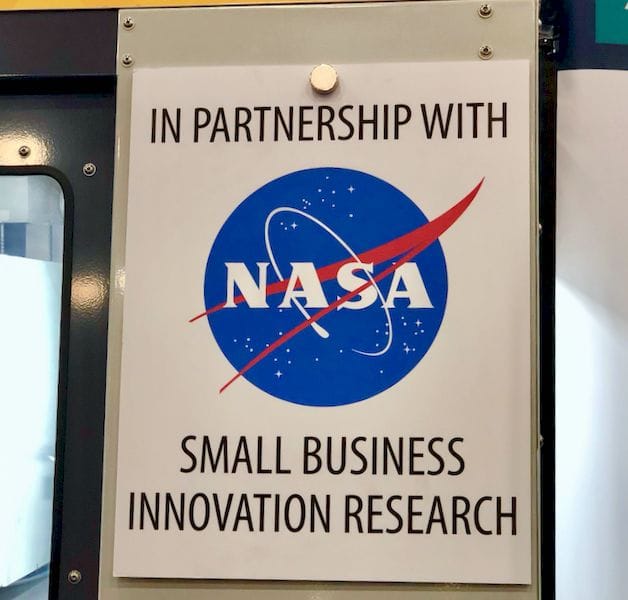![Fabrisonic is working toward a space-rated 3D printer [Source: Fabbaloo]](https://fabbaloo.com/wp-content/uploads/2020/05/image-asset_img_5eb096d3c2928.jpg)
This week we found out Fabrisonic intends to develop a space-rated 3D printer.
The Ohio-based company offers a unique 3D printing process that is based on ultrasonic technology. They leverage the natural ability for metals to fuse together when vibrational energy is applied.
Their process involves applying ultrasonic waves to a stack of very thin sheets of metal. The vibrations cause these sheets to fuse together. It’s a unique 3D printing approach that uniquely allows different types of metals to be fused together, where normal methods would not permit such combinations. For example, you could produce an aluminum-titanium object.
But what is the outer space angle?
NASA has been investigating the possibility of a Space Station-based 3D printing service for some time. The advantages are obvious: they need only send up a stock of material, and then when parts are required, they can simply be printed on demand, rather than expensively shipping them up by cargo rocket.
We’ve seen several systems to solve this puzzle, as there are very different characteristics to the space environment. Most notably there is no noticeable gravity, thus most powder-based 3D printing processes are not applicable. Curiously, extrusion-based approaches do work in microgravity, as the extrusion bead naturally adheres to the build plate, regardless of orientation — or gravity. Welding-style metal 3D printing processes also work in microgravity.
![Fabrisonic’s SonicLayer 1200 ultrasonic 3D printer [Source: Fabbaloo]](https://fabbaloo.com/wp-content/uploads/2020/05/fabrisonic-space-printer-machine-1_img_5eb096d422b1a.jpg)
But both of these processes have two issues that could compromise their ability to be used in the confined quarters of a space station. First, there is significant heat involved in the printing process. Heat is not a welcome phenomenon on a ship, as accidents could result in a catastrophic fire.
Secondly, the heat could generate air pollutants, be they chemical or microscopic particles. Again, this is certainly not welcome on a space station where everyone shares the air.
Of course, it would certainly be possible to engineer methods of bypassing these issues, but that makes them more complex and, of course, heavier — also an unwelcome characteristic for an environment where every gram is expensive.
Fabrisonic’s proposition is that their process neither emits pollutants, nor involves heat. Ultrasonic 3D printing is a cold process.
![Inside Fabrisonic’s ultrasonic 3D printer, the SonicLayer 1200 [Source: Fabbaloo]](https://fabbaloo.com/wp-content/uploads/2020/05/fabrisonic-space-printer-interior-1_img_5eb096d465f8a.jpg)
So far they have redesigned their device to be at a somewhat smaller scale, demonstrating that the technology can be made to fit within the necessary smaller volumes for space use. This is Phase 2, and Fabrisonic calls it the SonicLayer 1200.
There is a possible Phase 3. Evidently NASA is to make decisions about what to do in the next phase later this year. It is possible they may choose Fabrisonic as one of their partners to continue development of a safer space 3D printer.
If that happens, Fabrisonic would engage in design of a space-rated device, one that would need to meet a myriad of NASA requirements for effective and safe use on the Space Station. If this is successful, at some point in the future the new 3D printer design might actually be launched to the International Space Station for testing by astronauts.
Via Fabrisonic











